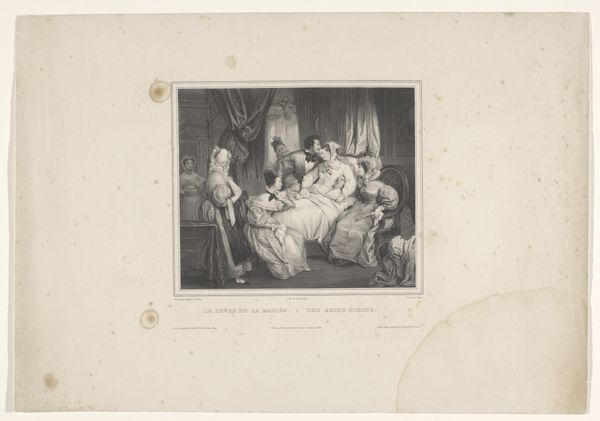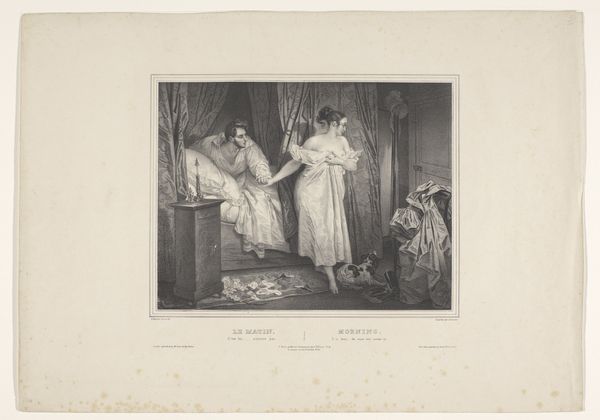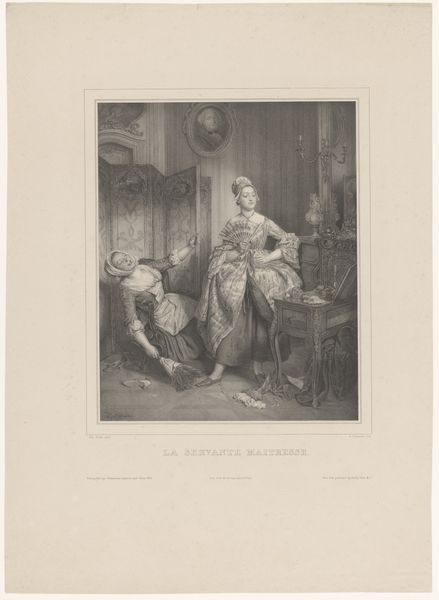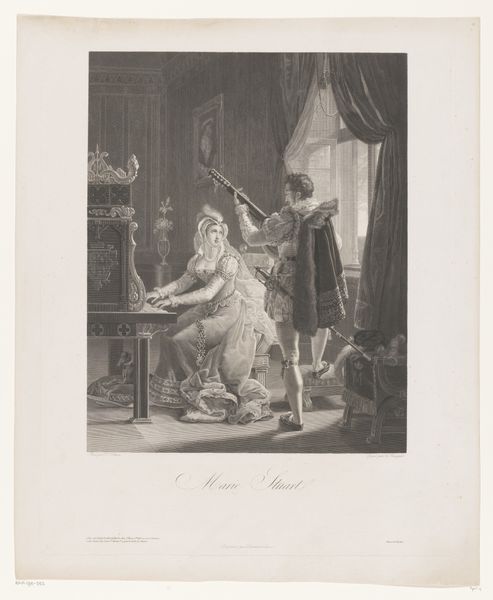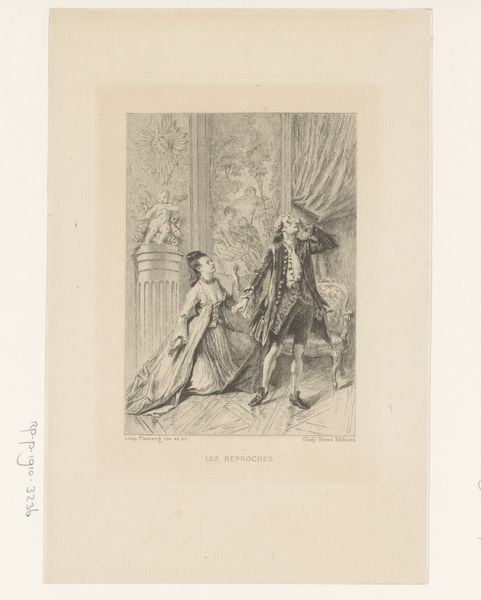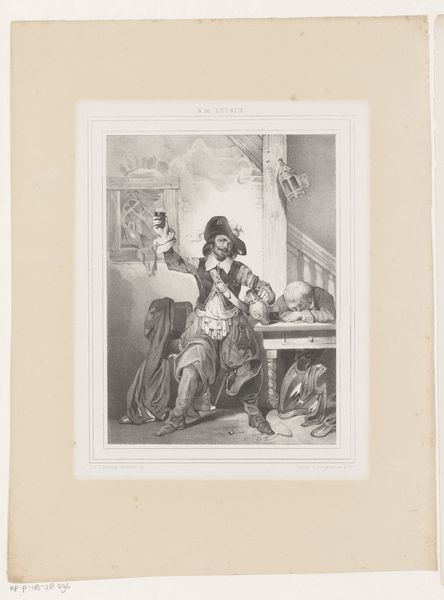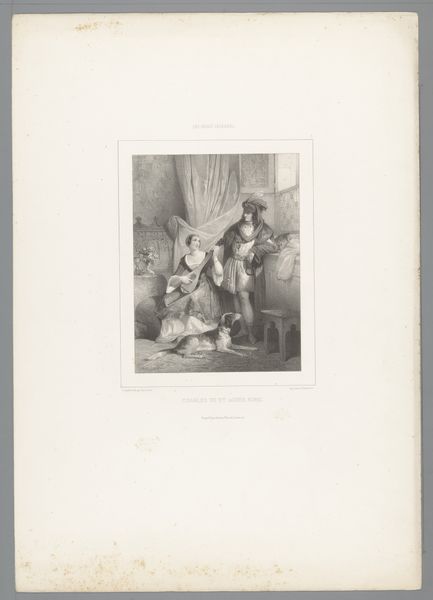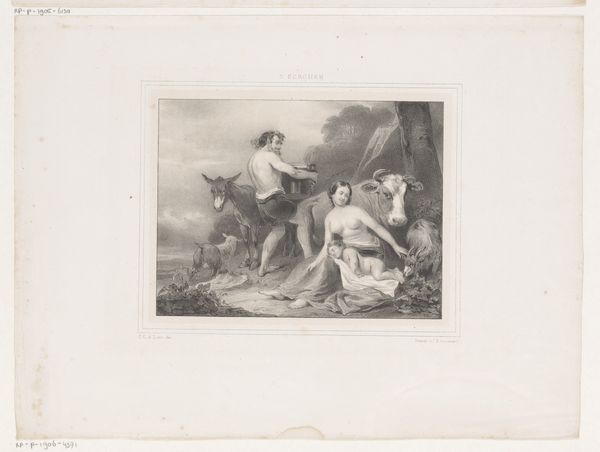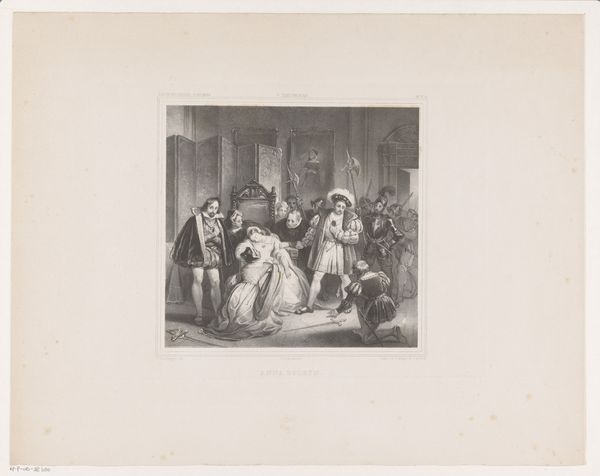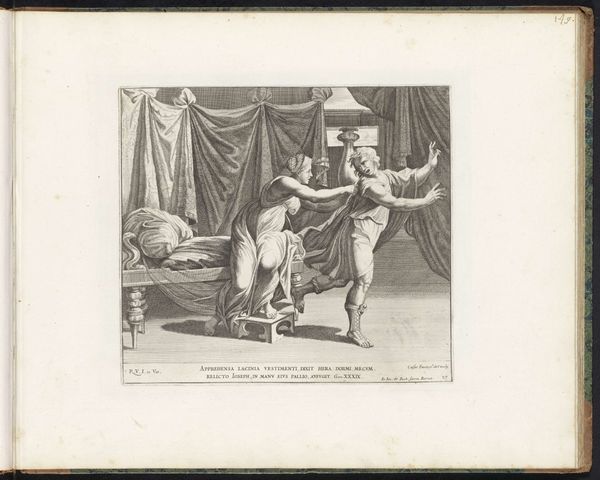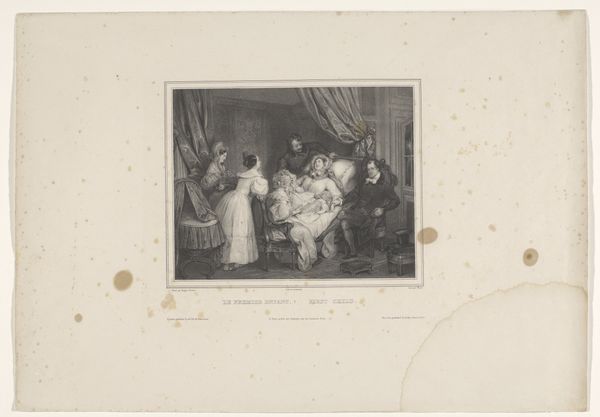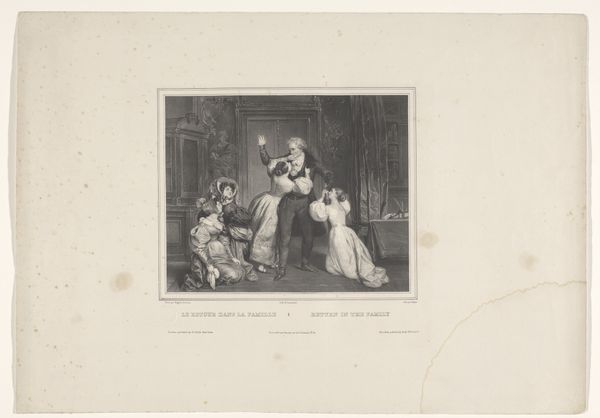
print, engraving
#
ink paper printed
# print
#
romanticism
#
genre-painting
#
nude
#
engraving
#
erotic-art
Dimensions: height 400 mm, width 568 mm
Copyright: Rijks Museum: Open Domain
Editor: This engraving, "Vrouw die een man afwijst" by Nicolas Maurin, dating from 1830 to 1837, feels surprisingly modern in its depiction of an intimate, potentially uncomfortable interaction. What's your read on this scene? Curator: What strikes me is the power dynamic being portrayed. A woman rejects a man’s advances, a narrative that has always existed but historically hasn't always been centered. How does this image speak to contemporary discussions about consent and female agency? Editor: That's a really good question! It's interesting how the setting, a lavish interior, seems to almost amplify the tension. Is that a commentary on class or societal expectations perhaps? Curator: Absolutely. Consider how the backdrop of luxury underscores the woman's precarious position. She may be wealthy, but is she truly free? How might we analyze her clothing –or lack thereof– within a context of commodification and objectification? What do we know about the production of "erotic art" such as this during that time, and for whose consumption was it made? Editor: So it’s not just a simple rejection, but a visual statement about women's limited power, even within opulent settings? Curator: Precisely. The artwork invites us to critique the gaze, question established norms, and consider whose voices and bodies are being represented and how. It's important to remember the female body has historically been the subject of policing. Does this work perpetuate or challenge those constraints? Editor: I never thought about it in so much depth. I initially just saw a rejection scene. Now I can see a reflection on power. Thanks. Curator: Art is rarely neutral. Our responsibility as viewers is to unravel the layered narratives and ask those critical questions.
Comments
No comments
Be the first to comment and join the conversation on the ultimate creative platform.
